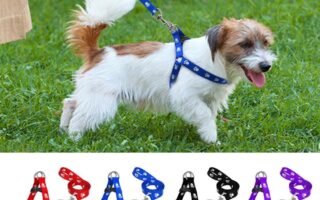In the intricate dance of companionship between humans and their four-legged friends, the exploration of K9 behavior opens a fascinating window into the minds of our canine companions. From wagging tails to perceptive glances, dogs communicate a wealth of emotions and intentions that often remain unspoken. Understanding these behaviors not only deepens our bond with our pets but also equips us with the insights necessary to guide them through the complexities of their world. Whether it’s a playful pup biding its time before pouncing on a favorite toy or a loyal guardian on alert for the slightest change in the environment, the nuances of K9 behavior are as varied as the dog breeds themselves. Join us as we delve into the science and art of understanding our furry friends, unveiling the secrets behind their actions and opening the door to a richer, more harmonious relationship.
Table of Contents
- Understanding Canine Communication for Better Interaction
- Deconstructing Common K9 Behaviors and Their Triggers
- Building Positive Reinforcement Techniques for Effective Training
- Recognizing Signs of Stress and Anxiety in Your Dog
- Q&A
- The Conclusion
Understanding Canine Communication for Better Interaction
Canine communication is a fascinating blend of vocal sounds and body language that dogs use to express their feelings, intentions, and needs. Understanding these signals can greatly enhance the bond between you and your furry friend. Dogs communicate through various means, including:
- Barks: Different pitches and rhythms can indicate excitement, fear, or alertness.
- Growls: Often a warning sign, but can also signify playfulness when accompanied by a wagging tail.
- Whines: A plea for attention, discomfort, or sometimes an expression of submission.
- Body Postures: Tail position, ear orientation, and overall stance can reveal a dog’s mood.
Moreover, learning how to interpret your dog’s body language opens up new avenues for interaction. For instance, a dog that rolls over may be asking for a belly rub, while a stiff posture could indicate fear or aggression. Here’s a quick reference table highlighting some common body language cues:
| Body Language | Meaning |
|---|---|
| Tail Wagging | Happy and excited |
| Flattened Ears | Fear or submission |
| Raised Hackles | Alertness or aggression |
| Panting | Excitement or stress |
Deconstructing Common K9 Behaviors and Their Triggers
Understanding canine behavior involves recognizing the signals that our four-legged friends often display. These behaviors can be influenced by various triggers, including their past experiences, environmental factors, and even their breed predispositions. Here are some common K9 behaviors and their potential triggers:
- Barking: Often triggered by territorial instincts, anxiety, or a desire for attention.
- Whining: Can indicate discomfort, stress, or a need for companionship.
- Tail Chasing: Typically a playful behavior, but can also stem from stress or boredom.
- Hiding: This behavior may signal fear or the need to escape overwhelming stimuli.
To further dissect these behaviors, it may be helpful to consider a simple breakdown of specific triggers:
| Behavior | Possible Trigger |
|---|---|
| Barking | Intruder presence or boredom |
| Whining | Hunger or separation anxiety |
| Tail Chasing | Excess energy or frustration |
| Hiding | Thunder, fireworks, or other loud noises |
Building Positive Reinforcement Techniques for Effective Training
Implementing positive reinforcement techniques in training can transform the relationship between a handler and their dog. This approach encourages desired behaviors by rewarding them rather than punishing undesired ones. Consistency is crucial; using specific rewards, whether treats, praise, or playtime, reinforces good behavior effectively. Consider the following techniques to enhance your training sessions:
- Timing: Reward immediately after the desired behavior.
- Variety: Alternate rewards to maintain engagement, including toys and verbal praise.
- Gradual Scaling: Start with simple commands and gradually increase complexity.
Incorporating positive reinforcement not only facilitates learning but also builds a strong bond based on trust and respect. Additionally, keeping detailed records of training progress can help assess which techniques work best for your dog. Below is a simple representation of a training schedule to track behaviors and rewards:
| Day | Behavior Targeted | Reward Used | Notes |
|---|---|---|---|
| Monday | Sit | Treat | Responded well. |
| Wednesday | Stay | Praise | Improvement noted. |
| Friday | Come | Toy | Excited response! |
Recognizing Signs of Stress and Anxiety in Your Dog
Understanding your dog’s stress and anxiety can transform their quality of life. Signs to watch for often manifest in their body language and behavior. Look out for excessive barking, which can indicate distress, as well as pacing or hiding. If your dog is constantly licking their lips or yawning without sleeping, it may be a sign that they are feeling uneasy. An overload of stress might also lead to physical symptoms, such as gastrointestinal issues or changes in appetite. Here are some other behaviors that may indicate your dog is struggling with anxiety:
- Destructive chewing
- Tail tucking
- Excessive panting
- Aggression or defensive postures
Environmental factors and routine changes can contribute significantly to a dog’s stress level. By keeping an eye on your pet during moments of potential stress, such as thunderstorms or unfamiliar guests, you can help identify triggers. The following table outlines common stressors and corresponding canine reactions:
| Common Stressors | Dog’s Reaction |
|---|---|
| Fireworks | Shaking, hiding |
| New environment | Barking, withdrawal |
| Vet visits | Pacing, whining |
| Separation from owner | Destructive behavior |
Q&A
Q&A: Understanding K9 Behavior
Q1: What are the fundamentals of canine behavior?
A1: Canine behavior is rooted in both genetics and environment. Dogs are pack animals by nature, which influences their social interactions. Their behavior can be understood through the lens of body language, vocalizations, and social structures, as they communicate through subtle signals like ear positioning, tail movements, and eye contact. Recognizing these fundamental aspects is essential for any dog owner or enthusiast.
Q2: How can a dog’s breed influence its behavior?
A2: Each dog breed has been developed with specific traits that emerge in their behavior. For instance, herding breeds like Border Collies may display high energy levels and a penchant for chasing, while toy breeds may exhibit more playful and affectionate tendencies. Understanding these breed-specific characteristics can help owners tailor their training and activities to suit their dog’s natural inclinations.
Q3: What are some common misconceptions about K9 behavior?
A3: One common misconception is that a dog’s behavior is always a result of bad training or disobedience. In reality, many behaviors stem from instinctual drives or fear responses. Another myth is that dogs feel guilt; what might seem like guilt is often anxiety about past actions or a reaction to the owner’s tone. Correct interpretation of behaviors is crucial for effective training and bonding.
Q4: How do environmental factors affect K9 behavior?
A4: An environment rich in stimuli can significantly impact a dog’s behavior. A well-socialized dog exposed to various settings, people, and other animals typically exhibits balanced behavior, while isolation or lack of exposure can lead to anxiety and fear-based reactions. Additionally, routine plays a vital role; dogs thrive on predictability, and disruptions can lead to stress and behavioral issues.
Q5: What can be done to address problematic K9 behaviors?
A5: Addressing problematic behaviors requires patience and a multifaceted approach. Positive reinforcement training is often the most effective method; rewarding desired behaviors encourages dogs to repeat those actions. Understanding the root cause, whether it’s fear, boredom, or lack of exercise, is crucial. Consulting with a professional trainer or a behaviorist can provide tailored strategies for more challenging issues.
Q6: How can dog owners encourage positive behavior in their pets?
A6: Encouraging positive behavior starts with consistent training, socialization, and engaging activities. Providing mental stimulation, such as puzzle toys or obedience training, can help alleviate boredom and destructive behaviors. Regular exercise is equally important; a tired dog is a well-behaved dog. Lastly, building a bond through quality time fosters trust and helps dogs feel secure, enhancing their overall demeanor.
Q7: Are there key signs that a dog may be experiencing behavioral issues?
A7: Yes, there are several signs to watch for, including excessive barking, destructive chewing, aggression, or withdrawal from interaction. Changes in appetite or sleep patterns can also indicate stress or anxiety. If a dog’s behavior shifts significantly, it’s important to assess their environment and routine for potential triggers, and consider consulting a professional for a deeper understanding.
Q8: How does proper training impact a dog’s behavior long-term?
A8: Proper training lays the foundation for good behavior throughout a dog’s life. It promotes a sense of structure and security, teaching a dog how to respond to various situations. A well-trained dog is more likely to exhibit confidence and adaptability, which helps reduce anxiety and behavioral issues as they encounter new experiences. Investing in training is an investment in a harmonious life together.
Conclusion:
Understanding K9 behavior is a journey that enriches the bond between dogs and their humans. By recognizing the influences of breed, environment, and training, we can create a better experience for our four-legged companions. With patience and knowledge, we can nurture their behavior in ways that respect their nature while promoting harmony in our shared lives.
The Conclusion
understanding K9 behavior is an intricate dance of communication, instincts, and emotions. As we continue to delve into the fascinating world of our canine companions, it becomes evident that they are not just pets, but complex beings with their own needs and desires. By fostering a deeper comprehension of their behaviors, we not only enhance our relationships with them but also contribute to their overall well-being. So, whether you’re a seasoned dog owner or a curious newcomer, remember that every wagging tail and playful bark tells a story waiting to be understood. the journey to mastering K9 behavior is an ongoing adventure—one that enriches the lives of both dogs and humans alike. Happy exploring!

